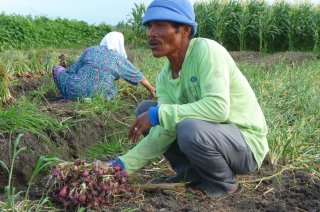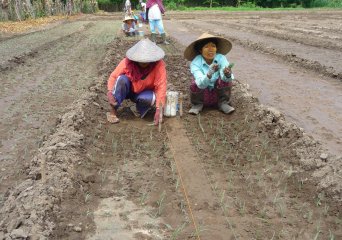
Shallots in Indonesia
Shallot is an onion variety of the species Allium. In Indonesia, shallot is the second major vegetable after hot peppers. The shallot area in Indonesia is about 160,000 ha producing annually about 1,500,000 tonnes (in 2017).
Current shallot systems in Indonesia use saved bulbs of the previous season as planting material.
One of the problems is that these bulbs are a major source of diseases, which are transferred to the next season. Current yields are therefore much lower than potential yields. An alternative system is based on true shallot seed (TSS) that uses disease free seed as starting material. As a result, yields of TSS systems are potentially higher than the current systems based on farm-saved bulbs.
An additional benefit of TSS is the lower costs for planting material including transportation costs. Disadvantages are the longer growing season, while it is only suitable for more sandy soils. Most of the soils in Brebes, which is the major production area of shallots, are heavy soils, hampering seed germination and transplanting of shallot seedlings.
The research question was to identify new suitable areas for TSS production given local agro-ecological conditions.

Methodology
Gridded information on soils and climate was combined with specific shallot requirements to identify the suitability of areas for TSS systems across Indonesia.

Results
Total cropland area amounts to 36 million ha in Indonesia (Table 1). An amount of about 900,000 ha cropland remains if TSS system requirements are considered by imposing stringent values on several soil and terrain characteristics (Fig. 1; Table 1).
